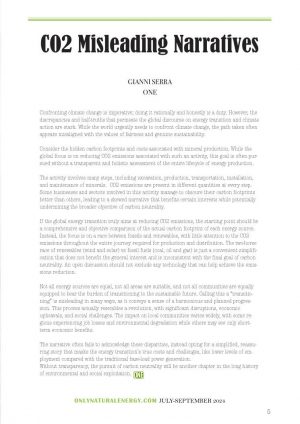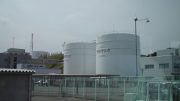 Confronting climate change is imperative; doing it rationally and honestly is a duty. However, the discrepancies and half-truths that permeate the global discourse on energy transition and climate action are stark. While the world urgently needs to confront climate change, the path taken often appears misaligned with the values of fairness and genuine sustainability.
Confronting climate change is imperative; doing it rationally and honestly is a duty. However, the discrepancies and half-truths that permeate the global discourse on energy transition and climate action are stark. While the world urgently needs to confront climate change, the path taken often appears misaligned with the values of fairness and genuine sustainability.
Consider the hidden carbon footprints and costs associated with mineral production. While the global focus is on reducing CO2 emissions associated with such an activity, this goal is often pursued without a transparent and holistic assessment of the entire lifecycle of energy production.
The activity involves many steps, including excavation, production, transportation, installation, and maintenance of minerals. CO2 emissions are present in different quantities at every step.
Some businesses and sectors involved in this activity manage to obscure their carbon footprints better than others, leading to a skewed narrative that benefits certain interests while potentially undermining the broader objective of carbon neutrality.
If the global energy transition truly aims at reducing CO2 emissions, the starting point should be a comprehensive and objective comparison of the actual carbon footprint of each energy source. Instead, the focus is on a race between fossils and renewables, with little attention to the CO2 emissions throughout the entire journey required for production and distribution. The two-horse race of renewables (wind and solar) vs fossil fuels (coal, oil and gas) is just a convenient simplification that does not benefit the general interest and is inconsistent with the final goal of carbon neutrality. An open discussion should not exclude any technology that can help achieve the emissions reduction.
Not all energy sources are equal, not all areas are suitable, and not all communities are equally equipped to bear the burden of transitioning to the sustainable future. Calling this a “transitioning” is misleading in many ways, as it conveys a sense of a harmonious and planned progression. This process actually resembles a revolution, with significant disruptions, economic upheavals, and social challenges. The impact on local communities varies widely, with some regions experiencing job losses and environmental degradation while others may see only short-term economic benefits.
The narrative often fails to acknowledge these disparities, instead opting for a simplified, reassuring story that masks the energy transition’s true costs and challenges, like lower levels of employment compared with the traditional base-load power generation.
Without transparency, the pursuit of carbon neutrality will be another chapter in the long history of environmental and social exploitation.
Gianni Serra





